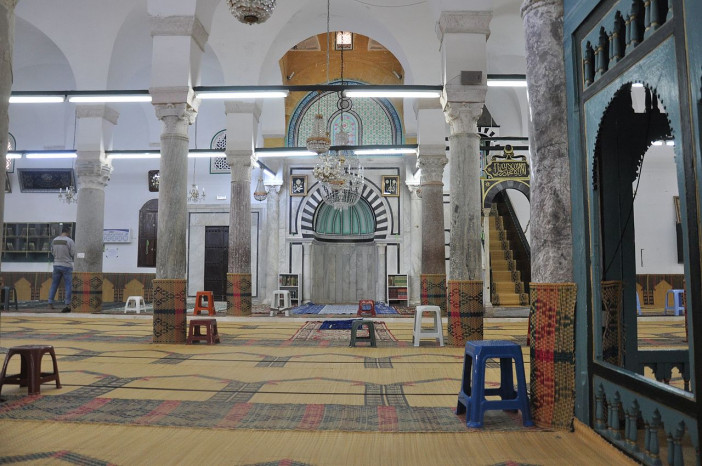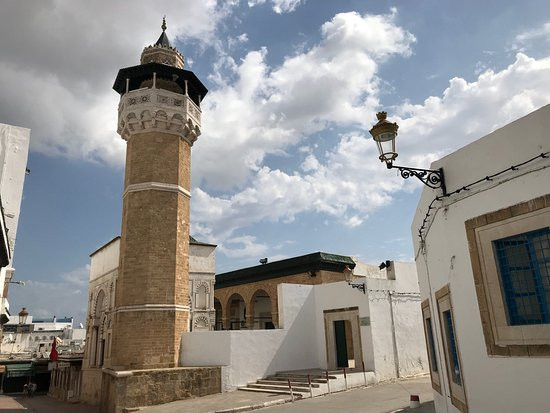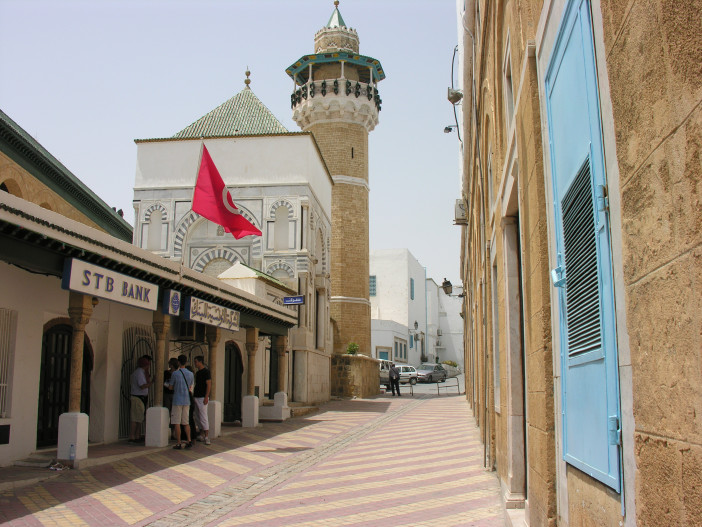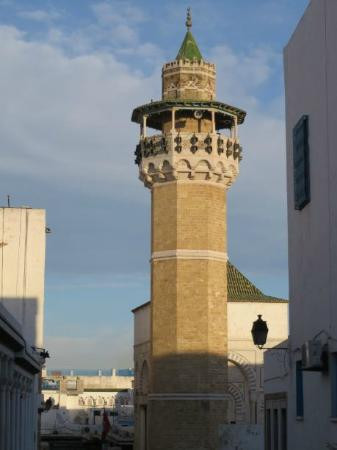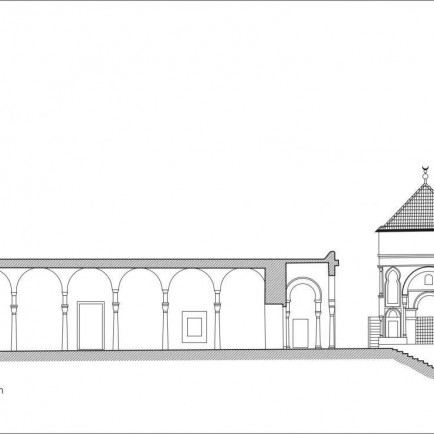Youssef Dey Mosque
History
After Ifriqiya was annexed to the Ottoman Empire in the AH 10th / AD 16th century, the number of Hanafi Turks continued to grow. Two Maliki mosques were then assigned to pray according to the Hanafi rite, the Kasbah Mosque and the Qsar Mosque. Then Youssef Dey decided to give Tunis the first mosque in Turkey. Construction began in AH 1023 / AD 1614 and ended a year later.
Urban and Architectural
The mosque named after its founder is of special interest because. while introducing new elements to the architectural plan and program, it preserves many aspects of the Ifriqiyan mosque.
The prayer hall is no longer preceded by a courtyard, but framed by courses to the east, north and west. Along the northern façade, the portico plays the role of tribune-narthex of the local mosques. on the northwest corner stands an octagonal minaret, above a square base. It ends with a balcony protected by a wooden canopy, the ensemble is crowned by a lantern with a pyramid roof covered with green tiles. This octagonal tower will serve as a model for the Hammouda Pasha Mosque, the al-Jedid Mosque and the Youssef Sahib el-Tabaa Mosque.
Description
Youssef Dey Mosque, or Sidi Youssef Mosque, is a historic Ottoman-era mosque located in the old city of Tunis in Tunisia. The mosque was founded as a small mosque in the year 1612 AD by Yusuf Dey (Youssef Dey,) the Dey of Tunis during the Ottoman era, who then opened it as an Friday mosque in the year 1631. The mosque, which includes the mausoleum of Youssef Dey, was restored in the 19th century and then inscribed as a UNESCO World Heritage Site in 1979 as part of Medina of Tunis.
Details
Location
Souk Trok Tunis Tunisie
Worshippers
400
Owners
Youssef Dey
Year of Build
1612
Area
1300
Drawings
Map
History
After Ifriqiya was annexed to the Ottoman Empire in the AH 10th / AD 16th century, the number of Hanafi Turks continued to grow. Two Maliki mosques were then assigned to pray according to the Hanafi rite, the Kasbah Mosque and the Qsar Mosque. Then Youssef Dey decided to give Tunis the first mosque in Turkey. Construction began in AH 1023 / AD 1614 and ended a year later.
Urban and Architectural
The mosque named after its founder is of special interest because. while introducing new elements to the architectural plan and program, it preserves many aspects of the Ifriqiyan mosque.
The prayer hall is no longer preceded by a courtyard, but framed by courses to the east, north and west. Along the northern façade, the portico plays the role of tribune-narthex of the local mosques. on the northwest corner stands an octagonal minaret, above a square base. It ends with a balcony protected by a wooden canopy, the ensemble is crowned by a lantern with a pyramid roof covered with green tiles. This octagonal tower will serve as a model for the Hammouda Pasha Mosque, the al-Jedid Mosque and the Youssef Sahib el-Tabaa Mosque.
Description
Youssef Dey Mosque, or Sidi Youssef Mosque, is a historic Ottoman-era mosque located in the old city of Tunis in Tunisia. The mosque was founded as a small mosque in the year 1612 AD by Yusuf Dey (Youssef Dey,) the Dey of Tunis during the Ottoman era, who then opened it as an Friday mosque in the year 1631. The mosque, which includes the mausoleum of Youssef Dey, was restored in the 19th century and then inscribed as a UNESCO World Heritage Site in 1979 as part of Medina of Tunis.


